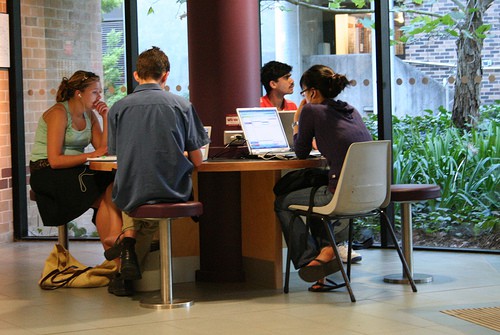A GPS for Every Secondary Student: 10 Key Features

Students have always benefited from performance feedback, mentors, advisors, counselors, and strong support systems. The exponential growth of learning options–formal and informal–creates new opportunity but adds new demands on student guidance systems. Adoption of blended learning strategies signals the potential for a more robust blended and distributed guidance system.
We’re putting the finishing touches on a Smart Series paper on next-gen student guidance systems. We started by identifying 10 potential functions of a robust guidance and advisory system. From a youth perspective, we think there are 10 benefits that secondary students should expect from school–and specifically from an advisory, counseling and guidance system.
-
Environment. Every student should be able to attend a school and/or be part of a learning community where he/she is known, respected, and safe.
-
Advocate. Every student should have an advocate–one person who shares responsibility with that student for navigating school and who knows the student’s goals and aspirations.
-
Options. Every high school student should have the choice of several relevant, rigorous courses of study where they think, read and write about things that matter and provide a bridge to college and work. Students should have access to guidance that, without barriers, support academic decisions aligned with goals.
-
Academic support. Every student should get the time and attention he/she needs to succeed–any subject, any time. Upper division high school students should have the opportunity to experience success in college level courses and on college campuses.
-
Career awareness. Students deserve the opportunity to learn about the range of career options and experience a wide range of work settings.
-
Post-secondary decision support. High school students deserve encouragement and support in post-secondary goal setting, exposure to a wide range of options, and guidance that results in the best possible choice of post-secondary learning opportunities.
-
Prep & aid. Students should be aware of and prepared for applicable college entrance exams and supported in their application for financial aid.
-
Support services. Students should feel supported by a web of youth and family services.
-
Mentors & role models. Students should have the opportunity to be around adults they can imagine themselves becoming (to paraphrase Debbie Meier).
- Full expression. Every student should develop self awareness and direction by participating in arts and extracurricular activities, using current technologies, and serving the community.
This list of expectations was based, in part, on a High School Student’s Bill of Rights drafted in 2002 and updated in 2009. What would you add to the list? What seems like an overreach?







0 Comments
Leave a Comment
Your email address will not be published. All fields are required.